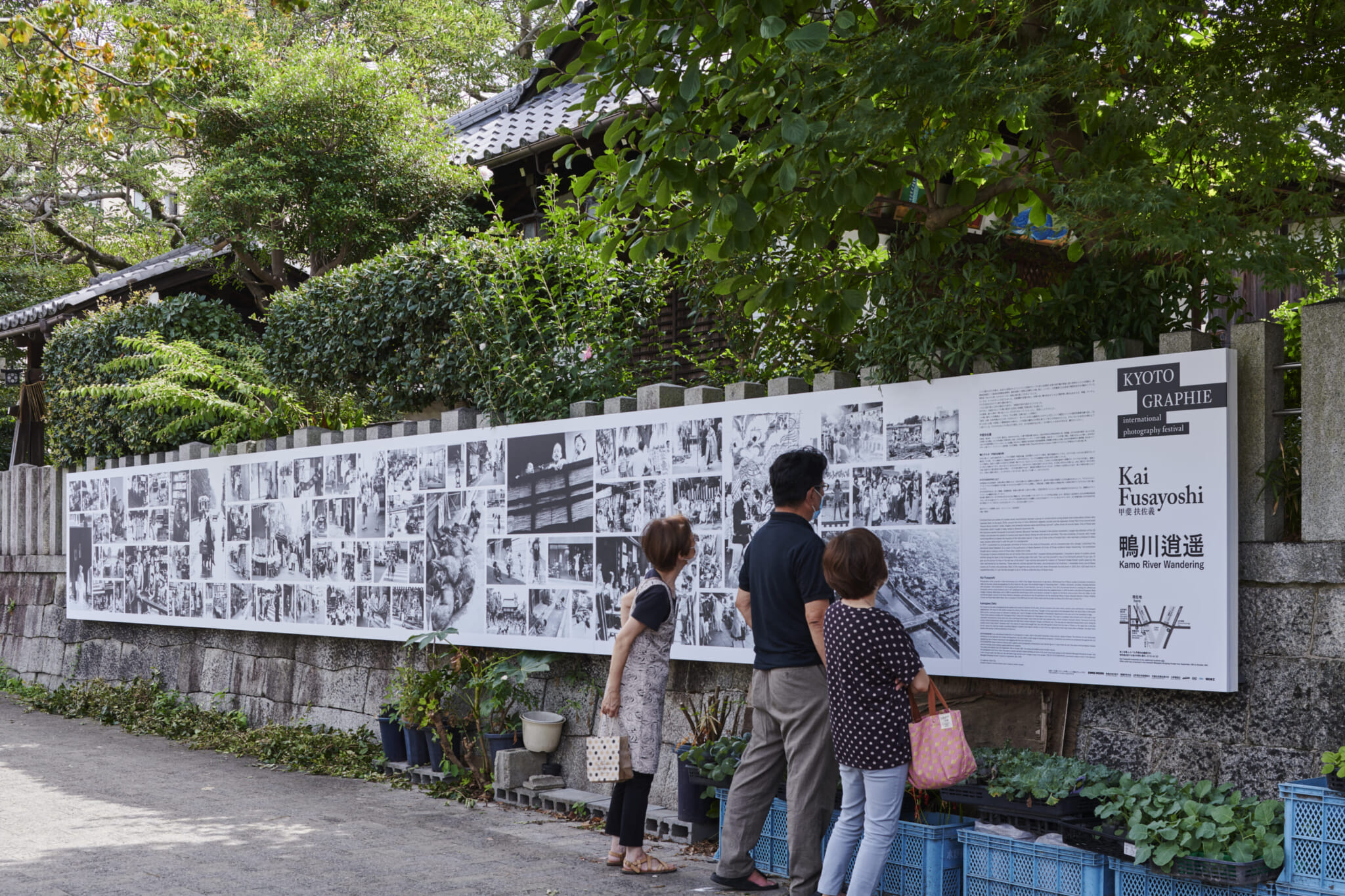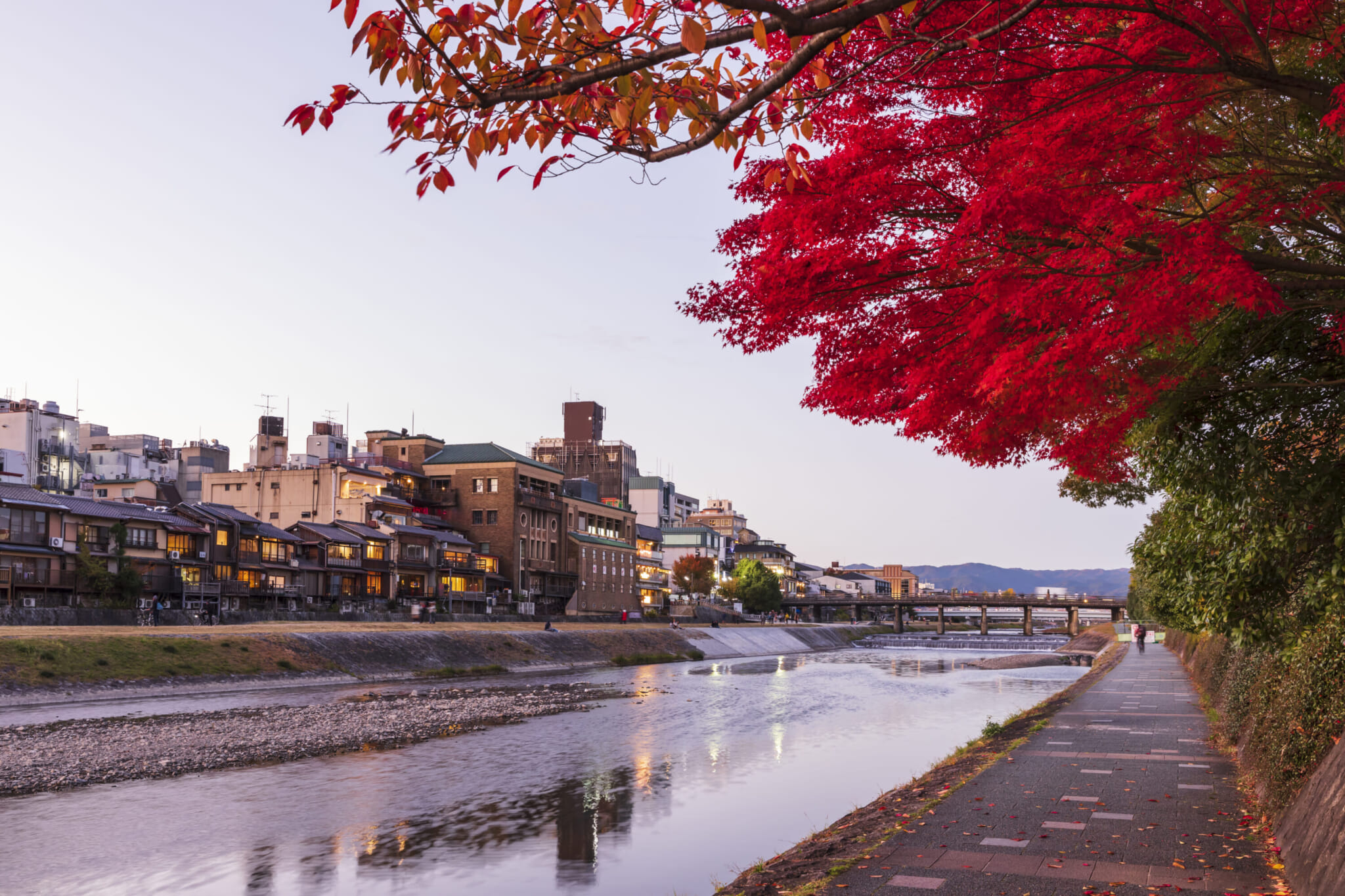I often imagine Kyoto. It has never been real to me, really — it often appears like an act of fiction. Abstract, caught at disparate times of the year and over many years, it intrigues, pulls and echoes. As a fully-fledged Tokyoite, the ancient capital has a lot to offer in terms of respite from the biggest city in the world, a look through a cultural frame of Japan of old, and of a different life, another life, a life that is not mine.
I found myself in Kyoto a few times during the pandemic, where I basically had the city to myself. Beautiful, tranquil and profound, I walked the streets alone and enjoyed the solitude and the eerie silence.
In the midst of 2020, on an assignment to cover the wonderful arts festival Kyotographie, I found myself crossing the bridge at Sanjo Station, buying a Kirin Ichiban Shibori tall boy and taking the steps down to the banks of the Kamogawa River where a few groups of students were dangling their feet over the water.

The Adventure of a Photographer
I lay my head down on the rocks, close my eyes and replay the last few months, decisions I’ve made, the mountains of regret and unabated shame that blazes inside me. It immediately reminds me of a photograph I saw earlier that day at Kyotographie by exceptional photographer Kai Fusayoshi. Taken decades earlier, it’s of a woman laying her head on the banks of Kamogawa — mirroring my actions exactly.
A few days later, I meet with Fusayoshi. Kai-san, as he’s more affectionately known in Kyoto, runs a bar which looks more like a used book store, named Hachimonjiya. He’s taken literally millions of photographs over his career, which spans roughly 50 years. We talk a little, share a few beers together in his dark and smoky bar, and the next day I attend his outdoor exhibition, which has been put together at the side of someone’s spacious home, which overlooks the Kamogawa River. The walls are filled with a large-scale monochrome collage depicting Kyoto, and this particular neighborhood, in the 1970s.
The image I saw and that beguiled me so much shows a woman lying beside the river and as I look at this picture, I feel tears streaming down my cheeks. The image, “Spring’s come and the riverside napping population grows,” for me, reflects our shared experiences and fundamental humanity that we find in everyday experiences and dreams.
Fusayoshi and his work remind me, very much, of an Italo Calvino short story from his collection Difficult Loves. The story in question, “The Adventure of a Photographer,” fascinated me as a student in Glasgow in the 1990s and has remained with me, in some way, ever since. A story I first read 25 years ago, in a tutorial class with my teacher, Dorothy McMillan, changed me and still continues to change me. A story of a photographer who descends into madness and obsession resonates with me, even now.
So, Calvino’s story of a man who ends up photographing the same room, continuously from the same angle, affected me in ways that other fiction has failed. The protagonist, Antonino, stumbles upon the realization that “Photography has a meaning only if it exhausts all possible images.” I often wonder if living is much the same. Living only has meaning if we exhaust every possible avenue, every possible possibility, every last chance. Otherwise, is there any point? Art, all art, is profoundly connected with this very premise. That’s why we continue, that’s why I’m writing this article. Perhaps other writers have written similar work but nobody has written this. No one has lived my life. Nobody but me. The quest is inexhaustible. Infinite. And that beguiles me.
The woman in Fusayoshi’s photo has her eyes shut and what looks like a beatific smile on her face. I wonder what she had been dreaming about and had she been truly blissful at that moment? Had she experienced the same misery, anxiety and angst as I had? Was she experiencing a glimmer of happiness in a period of turbulence and despondency? Where was she now? Is she still even living? What would she remember of that particular day and what dreams followed? Which dreams would remain? Then there was the breathless and inescapable certainty that I would follow her to the end, to the horizon.

Another Life
Meeting with Fusayoshi and other artists, writers and photographers had a beautifully therapeutic effect, at that time, on my psyche. It demonstrated that art can mirror and heal and comfort and empathize. Kyoto became a place of refuge for me and I seriously considered moving there in order to regain some composure and distance.
I imagine another life lived there. Walking through Nakagyo in the early morning, stopping for a flat white at School Bus Coffee Stop, facing the windows which look out onto the road with office workers munching onigiri and pastries and parents with kids perched on the rears of bicycles. I walk to the river and towards Sanjo and follow the tourists and locals as they try not to rip each other apart. I turn and walk to Heian Jingu with its monstrous size and intimidation. It’s deserted and I drain a can of Pepsi from the vending machines near the entrance with large gray stones which have been used as ad-hoc seats for centuries.
Then I find myself cracking, losing control of my self, my grip on what is real.
I wake and find myself in Kyoto again, perhaps in early fall. The burnt umber leaves littering the paths of Sanjo Dori crackle then sweep into the air and fill the sky above me with mismatched stars and clusters in the cosmos. The wooden machiya on either side of the street begin to fissure, eventually splinter and shatter into millions of pieces with the deafening blast echoing down Sanjo Dori as far as Kamogawa. I wade through the river with stones and boulders bulging in my pockets, the freezing water arresting my chest, my hands flailing, my lungs caught. I step against the tide, water crashing and the sounds like whispers. I stop on the street and gaze blankly at the sky.
I’m also, somehow, in Glasgow, lying limply on my late beloved mother’s lap, with an incandescent blanket knitted by my grandmother tightly wrapped around me. My mother inserts her yellow-stained finger into my mouth and it tastes like tobacco, but it makes me calm and drowsy as I dream of my future as a footballer or lawyer or man or human or…
A crash of lights, the primeval roar of pigeons lining the streets of Kyoto, an emaciated naked mother, perched on a park bench, breastfeeding her infant with only a threadbare shawl to protect, the pungent smell of tobacco wafting from street izakaya in plumes of cobalt blue like atomic mushroom clouds, the stooped elderly lady with multi-colored curlers in her hair like Hokusai’s waves, the massive heads of beer the size of hot air balloons, the high-pitched laughter of schoolboys yet to become men, the silent and upright figure wearing his deceased wife’s giant framed photograph around his neck standing helplessly looking into the souls of others.
Lonely singers in tiny booths chant silently, office workers walk on their hands and buildings randomly sprout and disappear into the unquantifiable vastness of the sky. Construction workers toil with miniature kazoos in empty parking lots and words quickly vanish from books as the silhouette of the city dissipates and gradually re-enters the soil from whence it came.
I check my phone, which illuminates in the darkness with a Rainer Maria Rilke poem sent from a friend.
Let everything happen to you: Beauty and Terror.
Just keep going. No feeling is final.
Don’t let yourself lose me.
Nearby is the country they call life.
This article is dedicated to the life of Mary McInnes (1943-2023)
Updated On June 12, 2023








